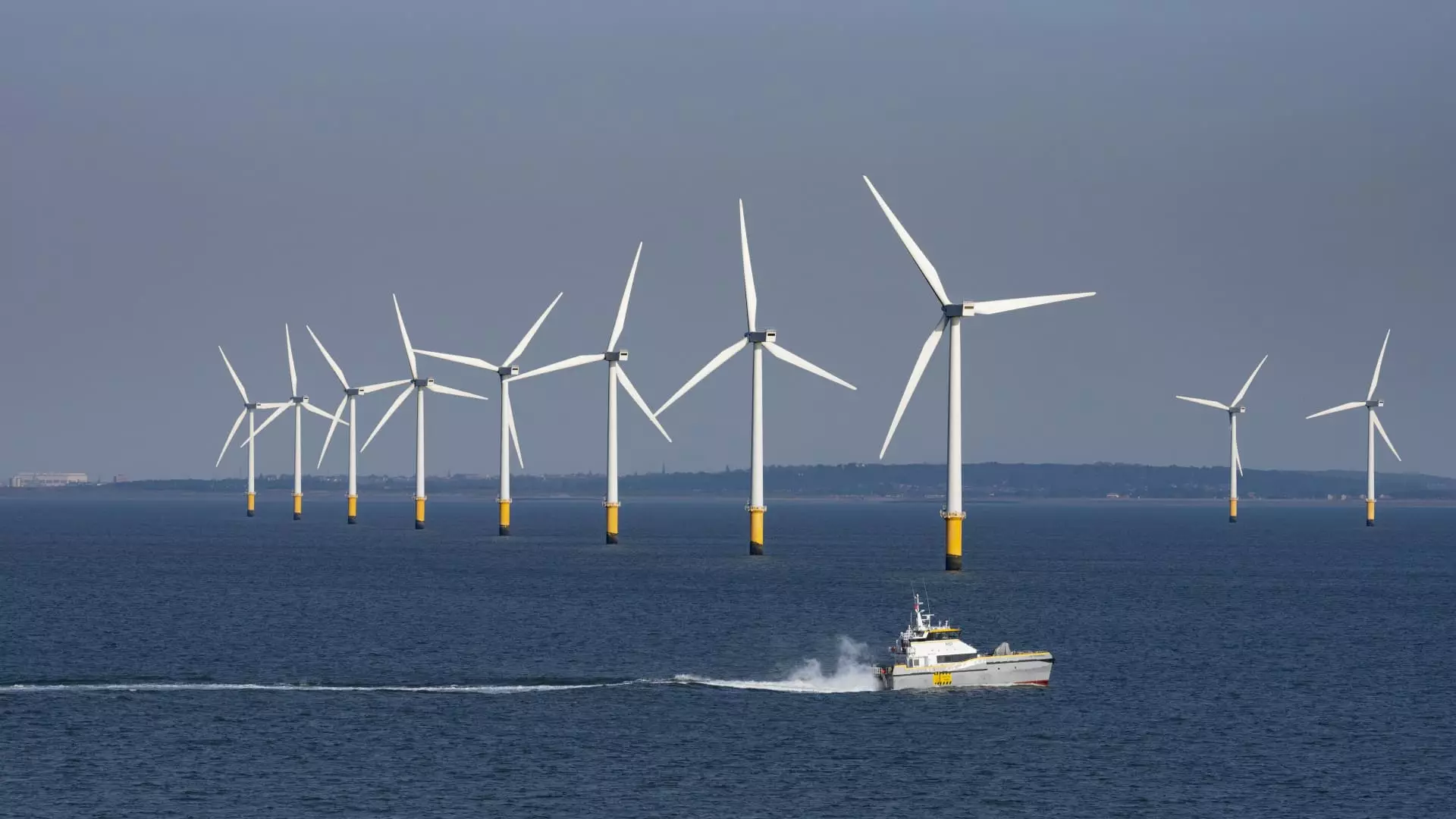Amid the political theater surrounding Donald Trump’s “big beautiful bill,” there’s a tendency to interpret incremental policy shifts as signs of robust progress. European investors, influenced by fleeting adjustments in U.S. legislation, have rallied behind wind power stocks, claiming a “win” that signals stability and growth. Yet, beneath this superficial enthusiasm lies a stark reality—American renewable energy policy remains unstable, inconsistent, and fundamentally compromised. Relying on temporary amendments and political band-aids to prop up an already fragile sector offers nothing more than a temporary illusion of security, overshadowing looming structural threats that could undermine the sector’s long-term viability.
The stock market’s knee-jerk reaction, driven by minor legislative tweaks like removing taxes on foreign components or extending project deadlines, masks deeper systemic issues. When investors begin to celebrate these tepid signals, they ignore the broader geopolitical and economic uncertainties, notably the geopolitical chess game with China that continues to jeopardize supply chains and innovation. Wind and solar firms might see some immediate benefits, but these are akin to patching a sinking boat with duct tape—short-lived solutions that distract from the fundamental vulnerabilities awaiting further policy reversals or economic shocks.
Legislative Cliff-Edge and Short-Term Hedges
One of the supposed “wins” in the recent legislative revisions is the removal of a controversial deadline—delivering a false sense of continuity for U.S. wind projects. While delaying the end of the tax credit cliff to mid-2026 might boost near-term activity, it is by no means a guarantee of sustainable growth. These changes merely delay the inevitable reckoning, transforming what could have been a planned transition into a chaotic scramble to meet arbitrary project start dates.
This element of political arbitrage highlights the sector’s dependency on government discretion rather than market fundamentals. Such dependencies create a precarious environment, sending mixed signals to investors and manufacturers. The sector’s resilience is further strained by the ongoing tariff and trade uncertainties, especially with China—an issue that does not resolve itself with temporary legislative adjustments.
The supposed “relief” offered by these amendments ignores the long-term risks: supply chain disruptions, rising costs, and the fragile geopolitical balance. European companies, like Vestas and Orsted, might experience short-term gains, but their strategies are vulnerable to shifts in U.S. policy, which could pivot sharply with the next political cycle.
The U.S. as a Sectoral Fragility Point
In the broader geopolitical context, the U.S. market remains a double-edged sword. While it is a significant growth engine for European renewable giants, the sector’s future relies heavily on a policymaking environment that is unpredictable at best. The sector’s foundational stability depends on consistent support—something that current legislative developments fail to assure.
Furthermore, the narrative that draws optimism from resuming project construction or maintaining current capacity overlooks the deeper issues within the American energy landscape. The Biden administration’s ambitious decarbonization goals are now under threat from policies that actively dismantle parts of existing support structures, such as the Inflation Reduction Act. The new bill, instead of reinforcing the foundation for clean energy, complicates and constrains future investments.
This disruptive approach effectively stalls potential advances in grid modernization and decarbonization. A sector that relies heavily on government incentives and predictable policy pathways cannot afford these abrupt policy reversals. As a result, European firms, vulnerable to these shifts, must grapple with the unintended consequence of diminishing U.S. market stability, despite some signs of short-term momentum.
European Reckoning and Future Risks
European renewable leaders have watched the U.S. market with cautious optimism, aware that their investments are vulnerable to U.S. policy swings. Although companies like RWE, EDPR, and Iberdrola benefit from the U.S. market’s size, their confidence is tempered by awareness of the structural vulnerabilities—project cancellations, policy uncertainty, and geopolitical risks.
The ongoing debate reveals an uncomfortable truth: the U.S. has yet to establish a coherent, long-term strategy for renewable energy. The current legislative patches are more akin to temporary bandages that ignore the underlying deficiencies in policy consistency and political willpower. As foreign firms invest billions on the hope of stable regulation, they face the risk of their investments evaporating once political winds shift again.
Additionally, the focus on immediate project start deadlines and tariff defenses muddles the bigger picture—long-term technology innovation, infrastructure investments, and workforce development. These are the real drivers of sustainable growth, yet they remain secondary priorities in a climate driven by election-year politics and short-term legislative compromises.
The Center-Left Potential in Sustainable Policy
From a center-wing liberal perspective, the current trajectory underscores the need for a more balanced approach—one that prioritizes strategic, stable policies over populist gestures. The U.S. must recognize that renewable energy is not merely a short-term economic opportunity but a vital component of global climate responsibility and national security. Falling into the trap of reactive legislation, motivated by immediate political gains, only jeopardizes broader sustainability goals.
A meaningful transition demands bipartisan consensus rooted in long-term planning, fair regulations, and international cooperation, rather than reactive adjustments motivated by electoral cycles. European nations, with their more stable policy environments and commitment to sustainable innovation, serve as cautionary models—reminding us that stability and consistency are paramount for fostering the innovation and investment necessary to combat climate change.
In sum, what’s presented as a pioneering moment for U.S. renewables is, in reality, a fragile, politically contingent patchwork. Without a concerted effort to establish lasting policy frameworks rooted in fairness and foresight, the sector is destined to remain fragile—little more than a mirage of progress in the face of relentless geopolitical and domestic uncertainties.

Leave a Reply